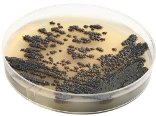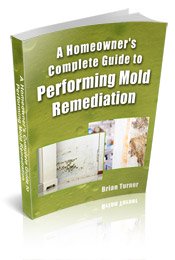Find a Mold Specialist Now
Click or Call, Toll-Free 24/7
Black Mold Test

Do you know how to test for black mold? You may need a black mold test if you find greenish-black mold in your house or your house has a strong musty smell, to find out if it’s Stachybotrys chartarum, a form of mold known to be particularly harmful to some people. It’s a common mold in the United States, though the New Mexico State University reports it’s found outdoors more than it’s found indoors. Sometimes it is found indoors, though, where it can lead to a variety of health problems.
In some cases, homeowner’s insurance policies will pay for a black mold test of your home. Otherwise, it’s worth the cost if you have to pay for it yourself, because black mold can be so harmful to your health, causing respiratory problems, rashes, seizures, fatigue and unusual bleeding. Small children, elderly people, pregnant women, those with respiratory disorders and those with compromised immune systems are most at risk.
How to Test for Black Mold
There are black mold tests you can buy and do yourself but we recommend you have a professional come to your home and do the test. He or she will know how to test for black mold, where to find it, and can make recommendations for removing the mold. Professional tests are more accurate than home tests you can buy and conduct yourself, plus your homeowner’s insurance might pay for a professional tests but it won’t cover a do-it-yourself model. Call your insurance company and explain why you believe you need a black mold test; describe any visible mold in your home, any musty smell, and any symptoms your or any family members have been experiencing.
There are two basic ways how to test for black mold. If you actually see mold growing somewhere in your house, that substance can be tested. If you don’t see any mold but you or your family members have symptoms of living in a home with black mold, there is a test that can be done of the air to search for traces of mold. The air test is much more accurate, and will detect mold that you may not have seen.
What the Results Mean
Regardless of how to test for black mold, there is some question of what the results mean. Neither the Environmental Protection Agency (EPA) nor the Centers for Disease Prevention and Control (CDC) have established levels that are considered safe. The CDC points out that if you or any family members seem to suffer ill effects that can be attributed to the presence of mold, you should leave the house if possible and invest in mold remediation.
However, even though no “safe” level has been established, if you have a black mold test performed before you clean up the mold, you can then perform another test to find out if the level is at least significantly reduced. If you have a professional perform the cleanup, make sure you get a test for the presence of black mold both before and after the cleanup. The mold tester should be able to advise you as to what level of mold in the home he believes to be dangerous; keep in mind, however, no amount of mold is really healthful to breathe day in and day out. Of course, you can also consult with a doctor about whether or not any health problems you are experiencing are related to black mold in your home.
You can also compare the results from one room to another by conducting air tests in several rooms. If you notice the mold level is much, much higher in your bedroom than in your living room or kitchen, that might explain why your sinuses act up every night.
Why We Recommend Having a Professional Test Your Home for Mold
- Most professional mold testers are engineers. They are trained to conduct mold tests with precision and accuracy.
- They are also trained to know where to look for mold and can often find mold in places homeowners have overlooked.
- They can tell you what strains of mold are present in your home, which are present at dangerously high levels, and which pose the greatest health risks to you and your family.
- They can advise you about important safety precautions to take while removing mold from your home.
- They will return after mold has been removed to make sure none was missed.
Follow the link to get a list of certified
Mold Testers
in your area.
Additional Reading:
Identifying Black Mold - Finding hidden mold, black mold identification, further testing information.
Black Mold Testing - Additional information on testing for black mold including a review of using home black mold test kits.
Black Mold Health Symptoms Home Page





